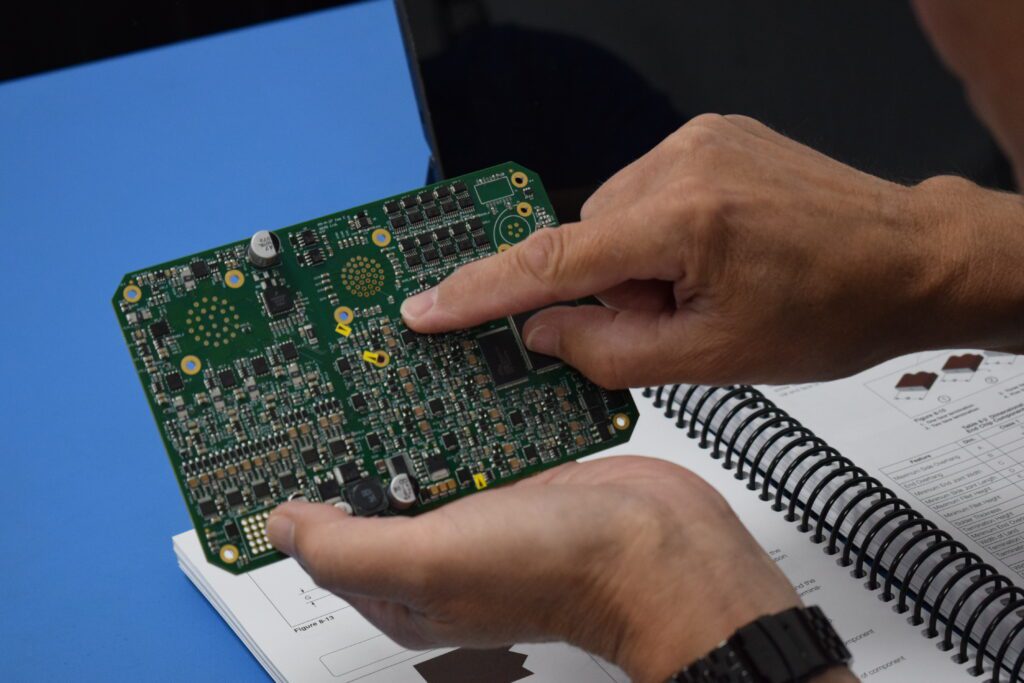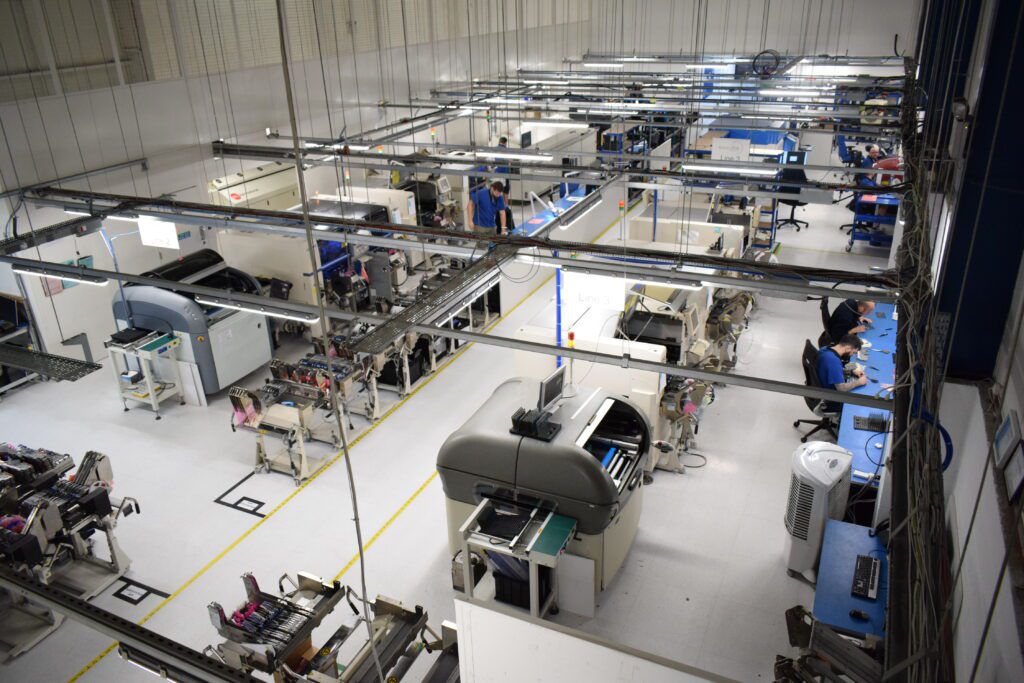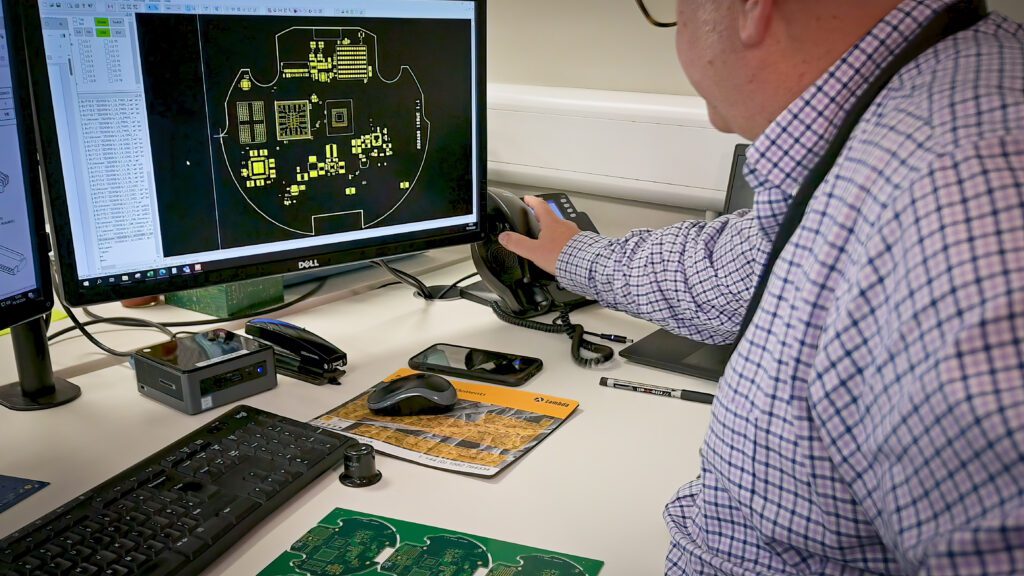IPC standards are globally recognised benchmarks that ensure high-quality, reliable electronics. Adopted across the electronics industry, these standards define clear, consistent expectations for every stage of production helping manufacturers build better products, faster.
When it comes to ensuring high-quality, reliable electronic assemblies, two IPC standards stand out: IPC-A-610 and IPC-J-STD-001. While these standards are often mentioned together, they serve distinct purposes within the PCB manufacturing and assembly process.
Understanding how they differ, where they overlap, and how they complement each other is essential for manufacturers, OEMs, and quality assurance professionals alike.
What Is IPC-A-610?
IPC-A-610, Acceptability of Electronic Assemblies, is the most widely used standard for defining the visual criteria for soldered electronic assemblies. It sets the inspection criteria used to determine whether an assembled PCB meets the quality expectations based on its intended use.
It focuses on visual acceptability of finished products, and defines classes (Class 1, 2, and 3) for different levels of reliability and end-use
- Class 1 – General consumer electronics
- Class 2 – Dedicated service electronics (e.g., industrial controls)
- Class 3 – High-performance, mission-critical products (e.g., aerospace, medical, defense)
IPC-A-610 also covers areas like solder joints, component mounting, cleanliness, and coating.
What Is IPC-J-STD-001?
IPC-J-STD-001, Requirements for Soldered Electrical and Electronic Assemblies, outlines the materials, methods, and process requirements for producing acceptable soldered connections. It focuses more on how assemblies should be built, not just how they should look.
It provides guidance on soldering processes, materials, and workmanship emphasising process control, not just end-product inspection. IPC-J-STD-001 specifies the conditions necessary to ensure reliable electrical and mechanical performance and it also includes classification by end-use (Class 1, 2, 3).

Key Differences
| Feature | IPC-A-610 | IPC-J-STD-001 |
|---|---|---|
| Focus | Final product visual inspection | Soldering processes and materials |
| Purpose | Acceptability criteria | Workmanship and process control |
| Application | Inspectors and QA teams | Engineers, process managers, assemblers |
| Coverage | Appearance of solder joints | Requirements for soldering techniques |
| Document Type | Acceptability standard | Requirement standard |
Why They’re Used Together
While IPC-A-610 focuses on the finished appearance, IPC-J-STD-001 ensures the processes used to create that product are sound and repeatable. Together, they form a comprehensive framework for producing high-quality, reliable electronics.
For example:
- IPC-J-STD-001 might dictate how solder paste should be applied and reflowed to prevent voids.
- IPC-A-610 would then define what an acceptable solder joint should look like after that process.
In many industries, especially tightly regulated industries such as aerospace and medical, customers require conformance to both standards to validate both the product’s quality and the robustness of the manufacturing process. These certifications help ensure that staff understand and consistently apply the standards, reducing rework, improving product quality, and ensuring compliance in regulated sectors.
For manufacturers committed to high-reliability assemblies, IPC-A-610 and IPC-J-STD-001 are not optional, they’re foundational.
Our In-House Training Academy
Something that sets Active-PCB Solutions apart from our competitors is our in-house Training Academy.
We have an IPC-accredited in-house trainer who is qualified to deliver the following training to Active-PCB’s internal staff as required, and is also available to deliver it externally:
- IPC-7711-21D Rework, Modification and Repair of Electronic Assemblies (up to 5 days, theory and practical)
- IPC-A-610J Acceptability of Electronic Assemblies (up to 3 days, theory only)
- IPC-WHMA-A-620E Acceptability of Electronic Wire Harnesses and Cables (up to 5 days, theory and practical)
- IPC-J-STD-001J Requirements for Soldered Electrical and Electronic Assemblies (up to 5 days, theory and practical)
You can find out more about about our Training Academy here.
Using a production partner like Active-PCB Solutions – who are not only certified to these standards but have an IPC-accredited in-house trainer – provides reassurance that these essential industry standards will not only be adhered to, but exceeded.
Contact us today to discuss how our IPC-compliant processes can support your next high-reliability project.



